Introduction
Purple sweet potatoes, with their vibrant hue and naturally sweet flavor, have become a beloved ingredient in modern cuisine. Beyond their striking appearance, these tubers are packed with antioxidants, fiber, and vitamins, making them a nutritious choice for homemade snacks. One of the most satisfying ways to enjoy their unique texture and taste is by transforming them into chewy, addictive purple sweet potato strips. These treats combine the comforting sweetness of roasted sweet potatoes with a satisfying, gummy texture that appeals to both children and adults. Whether you’re hosting a party, packing a lunchbox, or simply craving a guilt-free indulgence, mastering this recipe will elevate your snack game. This article will guide you through every step, from selecting the perfect ingredients to achieving that coveted chewy consistency. Let’s dive into the world of purple sweet potato strips!
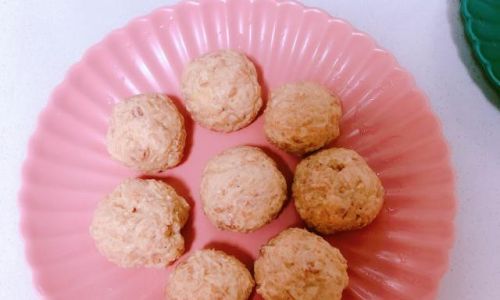
Ingredients: The Foundation of Flavor
Before embarking on your culinary journey, gather the following ingredients. Each component plays a crucial role in balancing sweetness, texture, and visual appeal:
- 2 medium purple sweet potatoes (approximately 500–600 grams): Choose firm, unbruised tubers with deep purple skin.
- 3 tablespoons tapioca starch (or cornstarch as a substitute): This helps bind the mixture and enhances chewiness.
- 2 tablespoons granulated sugar (adjust to taste; coconut sugar or honey work well for a healthier twist).
- 1 tablespoon unsalted butter (or coconut oil for a dairy-free option): Adds richness and softness.
- 1/4 teaspoon salt: Enhances the natural flavors.
- 1 teaspoon vanilla extract (optional): For a hint of aromatic sweetness.
- Cooking oil (such as vegetable or canola oil) for frying.
Equipment Checklist
- Sharp knife and cutting board
- Steamer basket or pot for boiling
- Large mixing bowl
- Potato masher or fork
- Parchment paper or silicone baking mat
- Rolling pin
- Sharp knife or pizza cutter
- Deep-frying pan or skillet
- Slotted spoon or tongs
- Paper towels (for draining excess oil)
Step-by-Step Preparation
Preparing the Purple Sweet Potatoes
Start by thoroughly washing the sweet potatoes under cool water to remove dirt. Pat them dry with a clean towel. There are two primary cooking methods to soften the flesh: steaming or boiling.
- Steaming: Place the sweet potatoes in a steamer basket over boiling water. Cover and steam for 20–25 minutes, or until a knife inserts easily. Steaming preserves more nutrients and prevents waterlogging.
- Boiling: Peel the sweet potatoes, cut them into chunks, and boil in salted water for 15–20 minutes until tender. Drain well.
Let the cooked sweet potatoes cool slightly, then remove the skins (if not pre-peeled). The flesh should be soft and easy to mash.
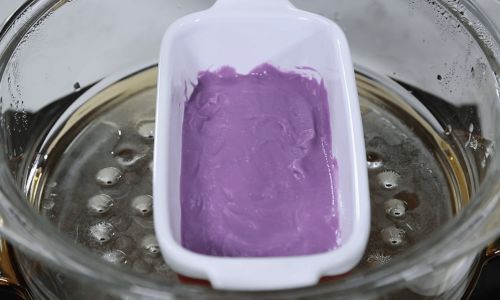
Mashing and Seasoning
Transfer the cooked sweet potatoes to a large mixing bowl. Add the tapioca starch, sugar, salt, and vanilla extract (if using). For a dairy-free version, substitute butter with coconut oil.
Using a potato masher or fork, vigorously mash the mixture until smooth. Avoid lumps, as they can create uneven texture in the final strips. The dough should be pliable but not sticky. If it feels too wet, add an extra teaspoon of tapioca starch. If too dry, incorporate a splash of melted butter or oil.
Shaping the Dough
Dust a clean work surface with a thin layer of tapioca starch to prevent sticking. Turn the dough onto the surface and knead gently for 2–3 minutes. This step activates the starch and ensures even distribution of ingredients.
Roll the dough into a rectangular slab using a rolling pin. Aim for a thickness of 1/4 inch—this balance ensures the strips cook evenly without becoming brittle. For uniformity, use a ruler to measure and adjust as needed.
Cutting into Strips
Using a sharp knife or pizza cutter, trim the edges to create straight sides. Slice the dough into 1/2-inch-wide strips. For bite-sized pieces, cut each strip into 3-inch lengths. Alternatively, leave them long for a dramatic presentation.
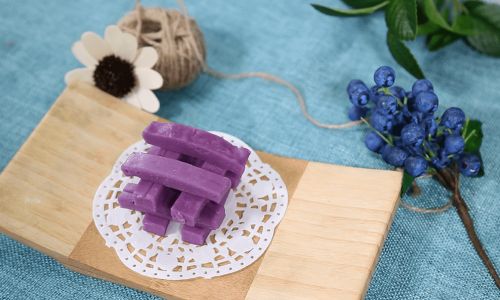
Lightly dust the cut strips with tapioca starch to prevent them from clinging together. Arrange them in a single layer on a parchment-lined baking sheet.
Frying to Perfection
Heat 2 cups of cooking oil in a deep pan or skillet over medium heat. To test the oil temperature, drop a small piece of dough into the oil. If it sizzles gently and rises to the surface within 5 seconds, the oil is ready.
Carefully add the strips in batches, avoiding overcrowding. Fry for 2–3 minutes per side, or until they puff slightly and develop a golden-brown crust. The purple hue will deepen during frying, creating a stunning contrast.
Use a slotted spoon or tongs to transfer the cooked strips to a plate lined with paper towels. This absorbs excess oil and prevents sogginess.
Cooling and Serving
Allow the strips to cool for 5–10 minutes before serving. The cooling process solidifies their chewy texture. For added flair, sprinkle with powdered sugar, cinnamon, or toasted sesame seeds.
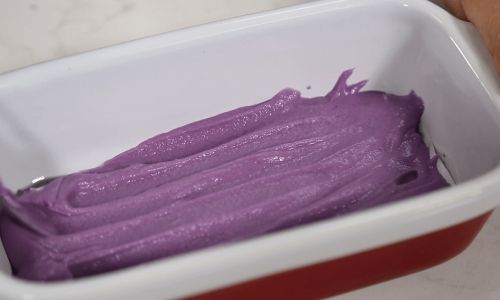
Tips for Success and Creative Variations
- Adjusting Sweetness: Taste the dough before frying and adjust sugar levels to suit your preference.
- Flavor Infusions: Experiment with spices like cardamom, nutmeg, or matcha powder. For a savory twist, add a pinch of chili flakes or garlic powder.
- Baking Alternative: For a healthier option, bake the strips at 350°F (175°C) for 15–20 minutes, flipping halfway. They won’t be as chewy, but the flavor remains delightful.
- Storage: Leftover strips can be stored in an airtight container at room temperature for up to 3 days. Reheat in a toaster oven to restore crispness.
Troubleshooting Common Issues
- Sticky Dough: If the dough adheres to your hands or work surface, dust with more tapioca starch.
- Uneven Frying: Ensure consistent oil temperature. Use a thermometer to maintain 350°F (175°C).
- Too Brittle: Overcooking can cause dryness. Reduce frying time by 30 seconds and monitor closely.
The Science Behind Chewiness
The magic of purple sweet potato strips lies in the interplay between starch and moisture. Tapioca starch, derived from cassava root, contains amylopectin, a carbohydrate that gelatinizes when heated. This process creates a stretchy, glue-like matrix that traps moisture, resulting in a pleasingly chewy texture. The frying step dehydrates the surface while locking in moisture within the strips, amplifying the contrast between crisp edges and soft centers.
Cultural Significance and Modern Adaptations
Purple sweet potatoes, native to Central and South America, have been cultivated for millennia. In recent years, their vibrant color and health benefits have propelled them into global cuisine. This recipe pays homage to traditional Asian snack-making techniques, which often involve steaming, mashing, and shaping starches into chewy treats. Modern adaptations, such as using alternative sweeteners or baking instead of frying, reflect evolving dietary preferences without compromising flavor.
Conclusion
Crafting purple sweet potato strips is a rewarding endeavor that marries culinary artistry with wholesome ingredients. From selecting the freshest tubers to mastering the frying technique, each step contributes to the final product’s allure. These strips are more than a snack—they’re a canvas for creativity, inviting you to experiment with flavors, textures, and presentations. Whether enjoyed warm from the fryer or packed in a lunchbox, their chewy embrace and vivid purple hue are sure to delight. So, roll up your sleeves, embrace the process, and savor the satisfaction of creating something truly special. Your taste buds—and your Instagram followers—will thank you!

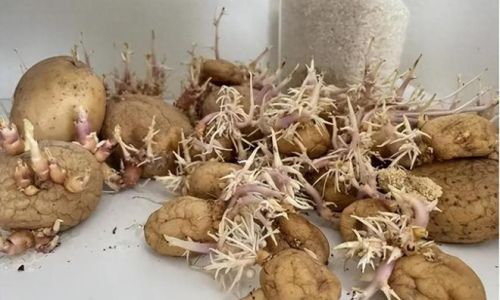
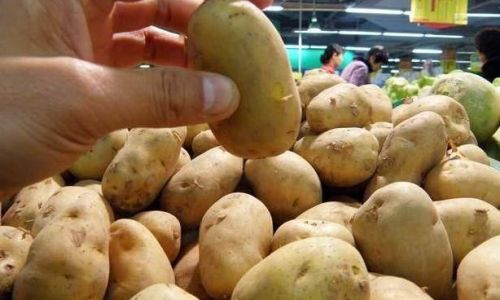
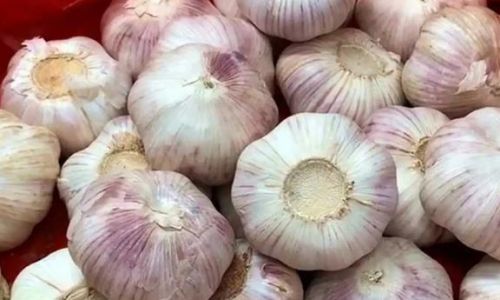



0 comments